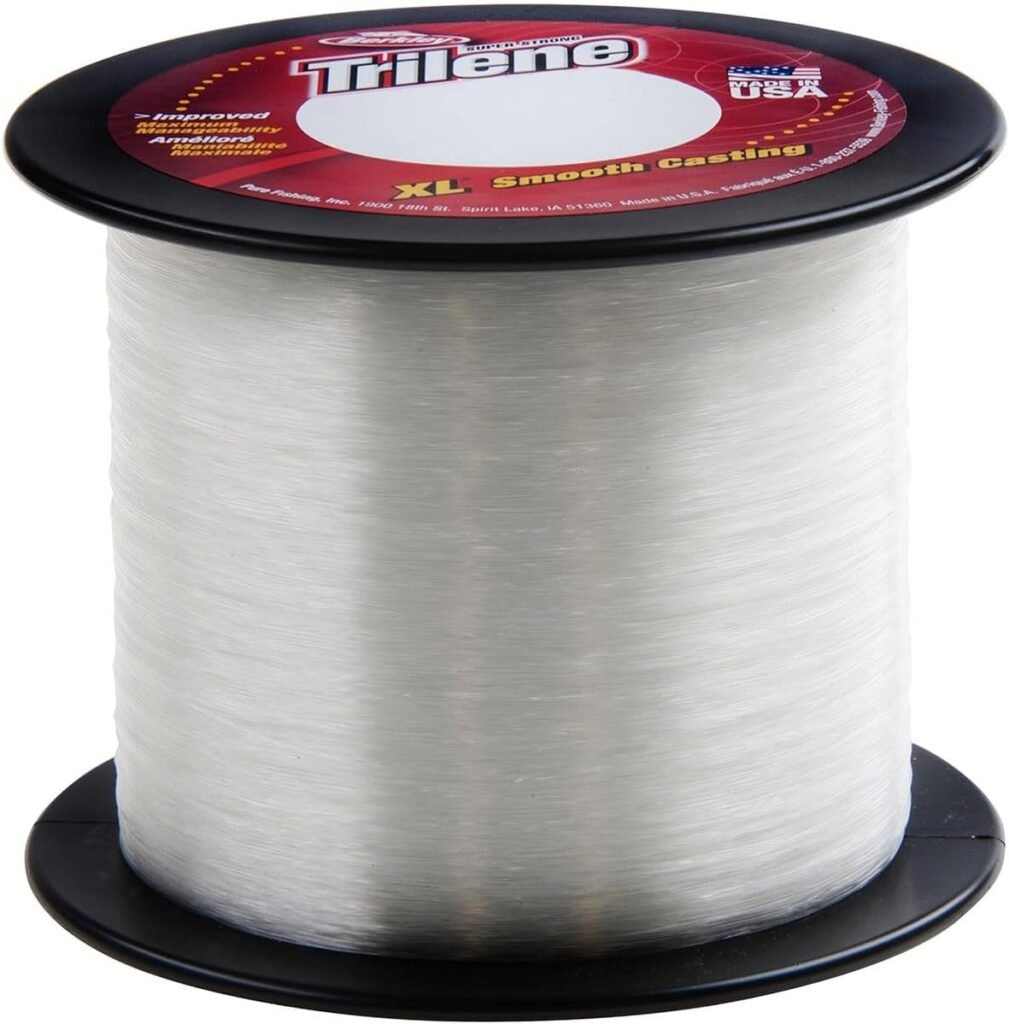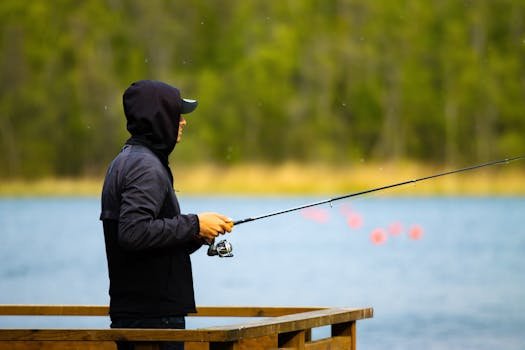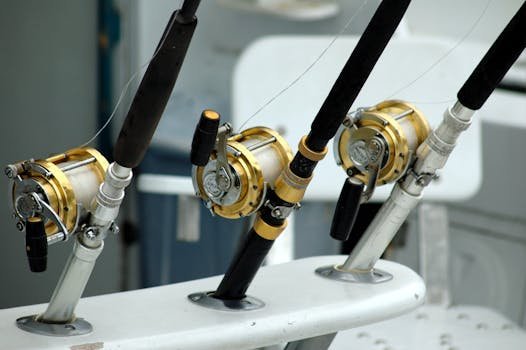Mono vs. Braid Fishing Line for Trout: My 2025 Stream-Side Picks
Hey, trout anglers! If you’ve ever stood knee-deep in crystal-clear water, watching spooky trout dart away from your lure, you know the right fishing line can make or break your day. After countless casts in rocky creeks and reader questions about monofilament vs. braided line, I’ve put both to the test on my spinning reels. Whether you’re chasing rainbows in a spring creek or casting long into a reservoir, here’s my take on which line deserves your reel in 2025—and why it’s worth spooling up right.
New to spooling? Check out my Beginner Spooling Guide to nail the setup!
Quick Line Comparison
Here’s how 6 lb mono stacks up against 10 lb braid (same diameter as 6 lb mono):
| Feature | 6 lb Mono | 10 lb Braid |
|---|---|---|
| Stretch | ~18% | ~2% |
| Diameter | 0.23 mm | 0.14 mm |
| Abrasion Resistance | Solid | Decent (needs leader) |
| Underwater Visibility | Noticeable | Noticeable (colored) |
| Knot Strength | 80% | 95% (Palomar knot) |
| Price (150 yd) | ~$6 | ~$14 |
| Buoyancy | Sinks slowly | Floats |
Why I Love Mono for Trout
Mono’s my go-to when I want a forgiving, no-fuss line. Here’s why it’s still a classic:
- Cushions Hook-Sets: That 18% stretch saves you when a trout thrashes on your ultralight rod, especially with barbless hooks. I’ve landed feisty rainbows without ripping their lips.
- Perfect Sink Rate: Mono sinks just right for inline spinners or small spoons, keeping them in the strike zone without extra split shot.
- Wallet-Friendly: A 300-yd spool of Trilene XL costs less than my morning coffee run. I re-spool after a few trips without sweating the cost.
Where Mono Trips Up: Cold mornings make mono coil like a spring, and spinning lures can twist it into a mess. It handles rocks okay but won’t survive a snag-fest.


Why Braid’s My Pick for Precision
Braid’s modern edge has won me over for certain setups. Here’s why I keep it on my reel:
- Insane Sensitivity: Zero stretch means I feel every nibble, even on tiny jerk baits. It’s like the trout are texting my rod tip directly.
- Longer Casts: Its thin diameter (10 lb braid = 4-6 lb mono) cuts through wind and current, letting me bomb casts across wide rivers.
- Lasts Forever: Braid’s pricier, but it holds up for seasons. I flip it end-for-end after a year and it’s like new.
Braid’s Downsides: It’s visible underwater, so a fluorocarbon leader is a must in clear water. Also, that zero stretch can tear soft trout mouths if you’re too aggressive on the hook-set.
My Creek-Side Test Results
I spooled two 1000-size spinning reels: one with 6 lb Trilene XL mono, the other with 10 lb SpiderWire Stealth braid plus a 6 ft 6 lb fluoro leader (Alberto knot). Both used 6′ ultralight rods and 1/16-oz Roostertail spinners. Here’s how they performed:
| Metric | Mono | Braid + Leader |
|---|---|---|
| Avg. Cast Distance | 24 m | 27 m |
| Strike Detection (Soft Takes) | 7/10 | 9/10 |
| Landed Hookup Ratio | 90% | 88% |
| Snag Survival (4 Log Drags) | 3/4 | 2/4 (leader failed first) |
| Wind Knots (100 Casts) | 3 | 1 |
Takeaway: Braid nails distance and sensitivity, but mono’s simpler and tougher against snags.
My Go-To Line Setups for Trout
Here’s what I use in different scenarios:
| Scenario | Best Line | Leader | Why It Works |
|---|---|---|---|
| Crystal-Clear Creeks | 6 lb Mono | Optional 4 lb Fluoro | Stealthy, minimal hardware |
| Long Reservoir Casts | 10 lb Braid | 6 ft 6 lb Fluoro | Max distance, leader swaps easily |
| Snaggy, Brushy Streams | 6 lb Mono (Trilene XT) | None | Bounces back from rocks and logs |
| Ultralight Jigging (<1/32 oz) | 8 lb Hi-Vis Braid | 5 ft 4 lb Fluoro | Bright line tracks subtle bites |
| Night or Murky Water | 6 lb Green Mono | None | Stretch absorbs runs, visibility no issue |
Knots I Trust
- Mono to Lure: Improved Clinch or Trilene knot (wet it first for strength).
- Braid to Lure: Palomar knot (double the line through the eye).
- Braid to Fluoro Leader: Alberto knot or FG knot for tiny rod guides.
- Mono Leader to Mono Main: Double Uni knot—quick and reliable streamside.
Tips to Get the Most Out of Your Line
- Soak Mono Before Spooling: Dunk the spool in warm water for 10 minutes to cut memory and coils.
- Prevent Braid Slip: Add a wrap of electrical tape to your reel arbor before spooling braid.
- Swap Leaders Often: Replace fluoro leaders every 8–10 fish or after scraping rocks.
- Use Swivels: Inline spinners twist both lines; a small swivel saves you from tangles.
- Ease Up on Braid’s Drag: Let your rod flex absorb trout runs—braid doesn’t stretch.
My Budget-Friendly Line Picks
- Trilene XL Smooth Casting 6 lb: Affordable, reliable mono for everyday trout fishing.
- SpiderWire Stealth 10 lb Moss Green: Tough braid with great casting distance.
- Seaguar Gold Label Fluoro Leader 6 lb: Invisible leader for spooky trout.
- Spro Size-8 Power Swivel: Tiny and strong to cut line twist.
Find these on Amazon by searching “trout fishing line” or “fluorocarbon leader.”
Quick FAQs
Can I skip a leader with braid?
You could, but in clear water, trout will spook. A short 3-ft fluoro leader boosts stealth.
Will 4 lb mono handle big trout?
Absolutely, if your drag’s smooth and your rod’s soft. Mono’s stretch gives you wiggle room.
How long does braid last?
Flip it after a season, replace after two if it’s frayed. It’s tough stuff!
Does mono float?
Standard mono sinks slowly, perfect for trout lures. Floating copolymers exist but aren’t common.
My Final Take
If you’re just starting out or fishing rocky streams, mono is your hassle-free friend—cheap, forgiving, and ready to go. For long casts and pinpoint sensitivity, braid with a fluoro leader is my pick—it lasts longer and feels every bite. Either way, a well-spooled reel (check my guide!) and sharp hooks matter more than fancy branding. Grab a budget line, hit the water, and enjoy those trout fights!
Tight lines and happy fishing!
Affiliate Disclosure: Some links are affiliate links. I earn a small commission on qualifying purchases, at no extra cost to you. Thanks for supporting my recommendations!





